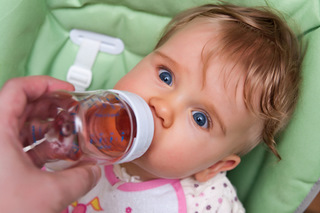Bottle Feeding Infants, what you should and should NOT do.
You will be bottle feeding infants in your daycare home if you choose to provide infant care. That is regardless of whether the mom is breastfeeding and bottle feeding. What is the best way to feed the Newborn Baby in your care?
Hold them when you feed them! Here are some reasons why you should -
- Babies want the relationship with you… They like to look at you, listen to you, and hear you.
- If you prop a bottle you could become distracted with the other children. The infant could go to sleep and stop sucking- the formula or breast milk can continue to come out of the nipple and pool in the baby’s mouth which can promote bacterial growth. If the infant wakes up this liquid can aspirate in the lungs, leading to aspiration pneumonia or chronic aspiration, or worse than these- they could choke!
What to do and NOT to do when bottle feeding
- Do wash your hands thoroughly prior to preparing the bottle.
- Follow all manufactures directions for properly preparing the formula being sure the ratio of water to formula are correct before bottle feeding infants.
- Ask the parents if you will need to sterilize the water used to mix formula (especially if the baby is a newborn). If you use well water, you will likely be told to sterilize it or use bottled water for mixing formula.
If you do choose to boil the water you use to mix formula, save yourself time by preparing enough for the whole day in the morning.

Our friend Shirley R Wrong uses rain water to mix the kids formula in. She says "it makes them grow like weeds!" While we don't recommend this, it is important to consider your water source. If you have well water you should have it tested for nitrates before considering it safe for babie's formula.
- Don't feed formula or breast milk left at room temperature in the bottle for more than an hour.
- Remove all prepared bottles (that parents bring daily) from diaper bags and store them in your refrigerator. If they provide frozen breast milk for breast feeding and bottle feeding, keep in the freezer until the baby’s feeding time. Then thaw the bag under warm running water.
- NEVER heat bottles in the microwave. Uneven heating can cause hot spots.
- NEVER heat bottles for bottle feeding infants on the stove.
- Do warm a bottle of either formula or defrosted breast milk by submerging it in a bowl or pan of warm (not boiling) water, by running the bottle under warm tap water, or you could purchase a bottle warmer sold at baby stores.
- Always test the temperature of the milk or formula in the bottle by shaking a few drops onto your inner wrist. It should feel tepid, NOT HOT.

Some daycare parents will bring you a can of formula and bottles to keep at your home for bottle feeding infants. Before you use new bottles, nipples, and rings for the first time sterilize them by submerging them in a pot of boiling water for 5 minutes. Then let them to dry on a clean towel. After that, a good cleaning in hot, soapy water or a cycle through the dishwasher is sufficient.
If
you have well-water, repeated sterilization of the bottles may be
required. Check with your licensing department or local child care food
program sponsor.
Go to the top of Bottle Feeding Infants
Return from Bottle Feeding Infants to Child Care Business HOME - child care jobs
Privacy and Affiliate Disclaimer Information
We built this website ourselves with Solo Build It.It was easy, with a step by step video guide! Check it out at the links below.
Copyright 2009-2013
Smart Start Child Care LLC
We work from home, check this out for 1 minute and you will see why we can!

SHARE YOUR THOUGHTS WITH US |




